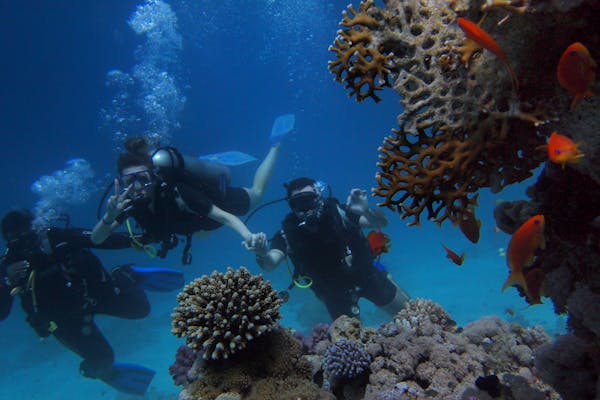The ocean is a vast and mysterious world, teeming with life and hidden wonders. Exploring marine life offers a glimpse into an incredible variety of species and ecosystems, each contributing to the complex tapestry of life beneath the waves. Here's a dive into the fascinating realm of the ocean's depths and the creatures that inhabit it:
The Diversity of Marine Life
Coral Reefs: Often referred to as the "rainforests of the sea," coral reefs are home to a diverse array of marine species. From colorful fish to intricate coral formations, these ecosystems are vibrant and full of life.
Open Ocean: This vast, pelagic zone is home to large migratory species such as whales, sharks, and tuna. The open ocean is a dynamic environment where animals travel great distances in search of food and mates.
Deep Sea: The deep sea is one of the least explored areas on Earth. In the dark, cold depths, you'll find unique creatures like bioluminescent jellyfish, giant squids, and bizarre-looking anglerfish.
Iconic Marine Species
Dolphins and Whales: Known for their intelligence and complex behaviors, these mammals are often the stars of marine life exploration. Whale watching and dolphin encounters offer exciting opportunities to observe these majestic creatures up close.
Sea Turtles: Ancient mariners of the sea, sea turtles are known for their long migrations and crucial role in marine ecosystems. Protecting nesting sites and reducing plastic pollution are vital for their survival.
Sharks: These apex predators play a critical role in maintaining the balance of marine ecosystems. From the great white shark to the gentle whale shark, they are both feared and admired.
Unique Marine Habitats
Kelp Forests: Found in colder coastal waters, kelp forests are underwater areas with high densities of kelp. These towering plants provide habitat for many marine species and play a significant role in carbon sequestration.
Mangroves: These coastal ecosystems are vital nurseries for many marine species. Mangrove roots provide shelter for juvenile fish and crustaceans, and the trees protect coastlines from erosion.
Seagrass Meadows: Seagrass beds are important feeding grounds for species like dugongs and sea turtles. They also help stabilize the seabed and filter water, contributing to the health of coastal ecosystems.
Conservation Efforts
Marine Protected Areas (MPAs): MPAs are designated regions where human activity is restricted to conserve marine ecosystems. They help protect biodiversity, replenish fish stocks, and preserve critical habitats.
Sustainable Fishing Practices: Overfishing is a significant threat to marine life. Sustainable practices, such as regulated fishing quotas and the use of selective gear, help maintain fish populations and protect endangered species.
Pollution Reduction: Reducing plastic pollution, chemical runoff, and other pollutants is crucial for maintaining healthy marine environments. Initiatives like beach cleanups and plastic bans are steps in the right direction.
The Role of Technology
Underwater Drones: Also known as remotely operated vehicles (ROVs), these drones are used to explore the deep sea and conduct research in areas that are difficult for humans to reach.
Satellite Tracking: Scientists use satellite tags to track the movements of marine animals, providing valuable data on migration patterns, behavior, and habitat use.
Marine Biology Research: Advances in marine biology research help us understand the complex interactions within marine ecosystems and the impacts of human activity on ocean health.
Ways to Explore Marine Life
Scuba Diving and Snorkeling: These activities allow you to immerse yourself in underwater environments and observe marine life up close. Coral reefs, shipwrecks, and kelp forests are popular diving spots.
Aquariums and Marine Sanctuaries: Visiting aquariums and marine sanctuaries offers an educational experience and supports conservation efforts. Many facilities focus on rehabilitation and release programs for injured marine animals.
Eco-Tours and Expeditions: Join guided tours and expeditions led by marine biologists and conservationists. These trips provide in-depth knowledge and hands-on experiences, from whale watching to coral restoration projects.
The Importance of Marine Life
Marine life is essential for the health of our planet. Oceans regulate the climate, produce oxygen, and provide food and livelihoods for millions of people. By exploring and understanding marine life, we can better appreciate the intricate connections within our environment and the need to protect these precious ecosystems for future generations.
Dive into the wonders of the ocean and discover the incredible diversity and beauty that lies beneath the surface. Whether through direct exploration or supporting conservation efforts, every action helps ensure the survival of our planet's vital marine life.




Comments (0)